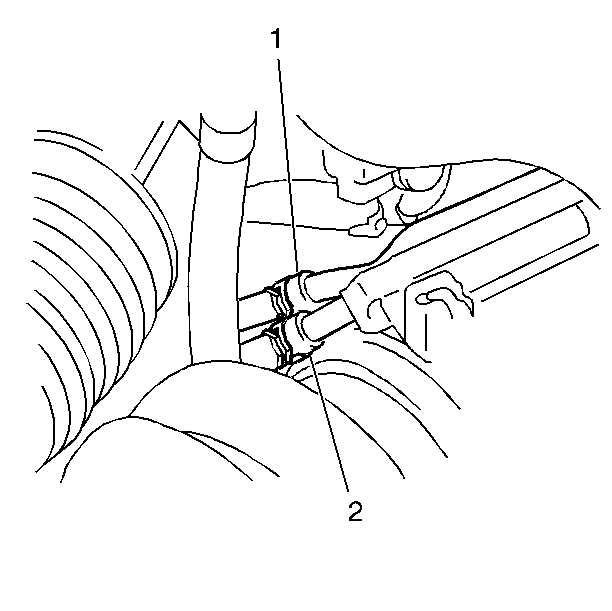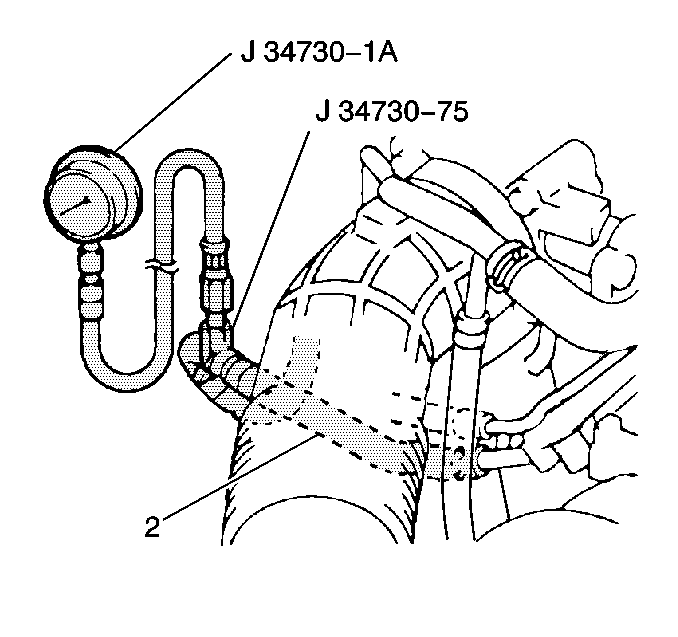Installation Procedure
Tools Required
- Relieve the fuel pressure. Refer to
Fuel Pressure Relief
.

- Disconnect the fuel feed
hose (2) from the chassis fuel feed pipe. Use a shop towel in order
to catch any remaining fuel that may leak.

- Install the J 34730-75
fuel rail adapter (1) to
the chassis fuel feed pipe.
- Connect the fuel feed hose (2) to the J 34730-75
fuel rail adapter (1), and
secure the hose with the hose clamp.
- Securely connect J 34730-1A
the fuel pressure gauge (3) to J 34730-75
the fuel rail adapter (1).
- Connect the negative battery cable.
- Start the engine.
- Idle the engine at normal operating temperature.
- Use the following procedure in order to check the fuel pressure:
| • | 200-240 kPa (28.5-34 psi) with the engine
idling. |
| • | 270-310 kPa (38.5-44 psi) with the engine
off and the ignition switch on. |
| • | The fuel pressure should remain at least 200 kPa (28.5 psi)
within 1 minute of key-off and the ignition switch on. |
- If the fuel pressure is not within the specification, refer to
Fuel System Diagnosis
.
Removal Procedure
- Relieve the fuel pressure. Refer to the
Fuel Pressure Relief
.

- Remove theJ 34730-1A
fuel pressure gauge (3) and
the J 34730-75
fuel
rail adapter (1) from the fuel feed hose and from the pipe. Use a shop
towel in order to catch any remaining fuel that may leak.
- Connect the fuel feed hose to the chassis fuel feed pipe, and
secure the hose with a clamp.
- Connect the negative battery cable.
- Turn ON the ignition in order to pressurize the fuel system.
- Turn OFF the ignition.
- Check for any fuel leaks.



